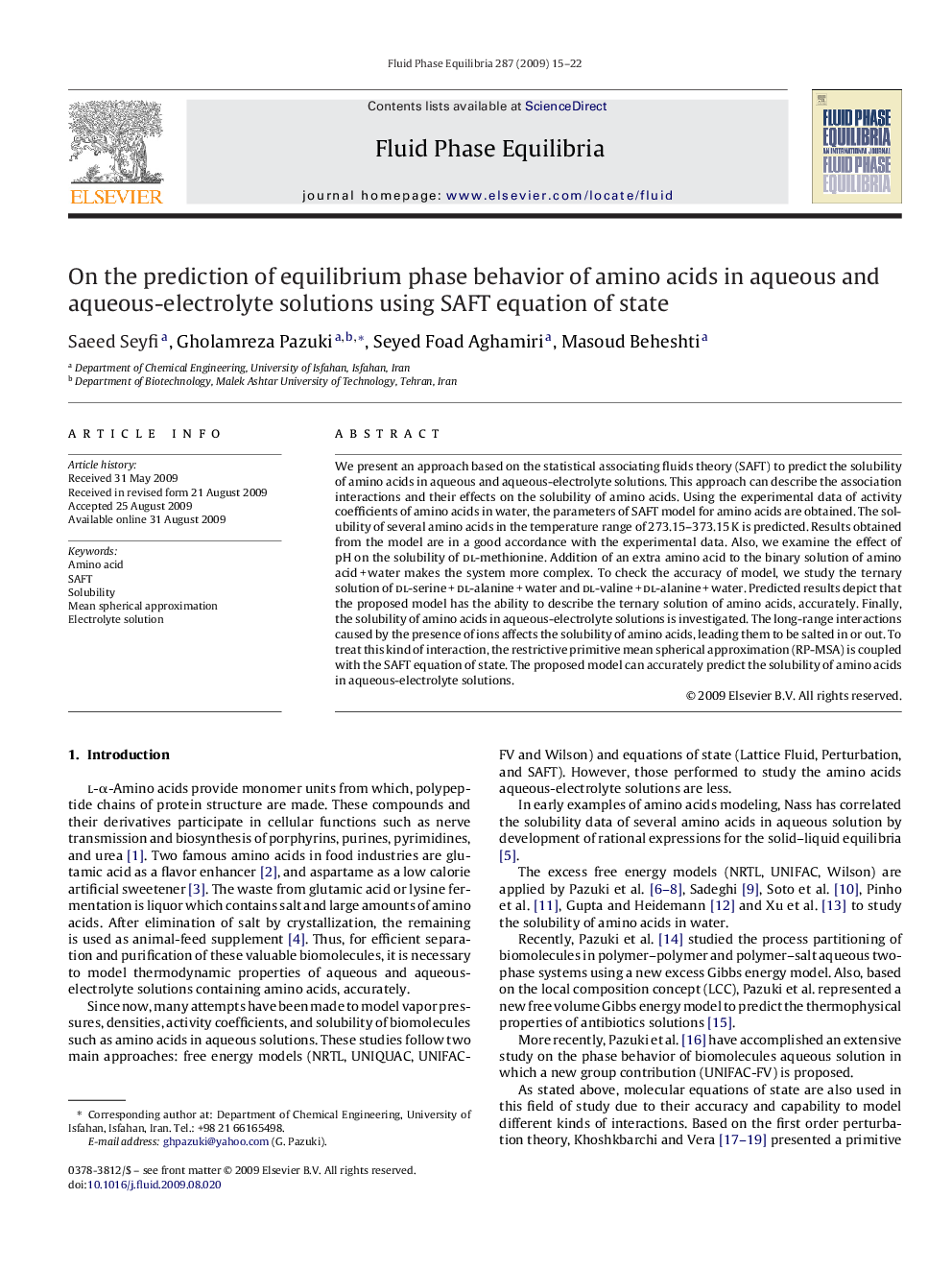| Article ID | Journal | Published Year | Pages | File Type |
|---|---|---|---|---|
| 203418 | Fluid Phase Equilibria | 2009 | 8 Pages |
We present an approach based on the statistical associating fluids theory (SAFT) to predict the solubility of amino acids in aqueous and aqueous-electrolyte solutions. This approach can describe the association interactions and their effects on the solubility of amino acids. Using the experimental data of activity coefficients of amino acids in water, the parameters of SAFT model for amino acids are obtained. The solubility of several amino acids in the temperature range of 273.15–373.15 K is predicted. Results obtained from the model are in a good accordance with the experimental data. Also, we examine the effect of pH on the solubility of dl-methionine. Addition of an extra amino acid to the binary solution of amino acid + water makes the system more complex. To check the accuracy of model, we study the ternary solution of dl-serine + dl-alanine + water and dl-valine + dl-alanine + water. Predicted results depict that the proposed model has the ability to describe the ternary solution of amino acids, accurately. Finally, the solubility of amino acids in aqueous-electrolyte solutions is investigated. The long-range interactions caused by the presence of ions affects the solubility of amino acids, leading them to be salted in or out. To treat this kind of interaction, the restrictive primitive mean spherical approximation (RP-MSA) is coupled with the SAFT equation of state. The proposed model can accurately predict the solubility of amino acids in aqueous-electrolyte solutions.
